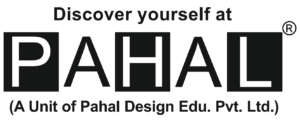12 Tips for How to Crack NIFT
- Practice is the key to success. Try to sketch almost anything and everything you come across.

- Browse through various newspapers, magazines and online sites.
- Take ideas from various advertisements, posters, banners etc., you come across.
- Keep your eraser away from you while practicing. It’ll help your lines become more bold and confident.
- Give importance to detailing where ever required, like the face of a human figure or the human’s outfits etc.
- Try to master the skills of human illustration. Concentrate more in proportions, form etc.
- Calligraphy skills come handy in posters, banner design, etc. Learn and practice different styles of lettering as they can come handy.
- Stick to the prescribed syllabus of the NIFT entrance exam.
- While sketching first make a light sketch and later darken the drawing once you are confident about it. This helps you save time erasing mistakes.
In the Examination Hall:
- Please use quality colour pencils. Best and economic option would be faber castle colour pencils with at least 24 shades in it.
- Planning is very important. First plan your ideas and then start on with sketching.
- Start off with simple ones like logo design or t-shirt design. Go for the complicated ones like scene drawing later.
- Please!! Plan your time and try to complete the paper.
A key component for the preparation for any exam is understanding the paper pattern and style. .
The entrance test consists of two main components: Creative Aptitude Test and General Aptitude Test. The General Aptitude Test consists of objective type questions with one mark for every correct answer and negative marks of 0.25 for each incorrect answer.
Creative Aptitude Test:
The test focuses on judging intuition skill, power of observation, innovation in development of a concept and design ability of the candidate. An important aspect of the test is the creative and innovative use of colour and illustration skills.
General Aptitude Test:
1) Quantitative Ability: It consists of questions on addition, multiplication, division, fractions, percentage, rate of interest, work and task, ratio and proportion, and distance.
2) Communication Ability: It is aimed at testing the language ability of the candidates. It includes questions on synonyms, antonyms, words with corresponding meanings, singular, plural, one word substitutes, idioms and phrases and correct spellings.
3) English Comprehension: It requires understanding and answering questions regarding a specific passage.
4) Analytical Ability: It is designed to test the candidate’s inference and logic ability from given information.
5) General Knowledge and Current Affairs is based on recent events and general knowledge.
6) Case Study: This test uses a situation to evaluate your style of response to discern your managerial ability
Bachelor of Design (B.Des):
Creative Aptitude Test (CAT) has 50 per cent weightage
General Aptitude Test (GAT) has 30 per cent weightage for a total of 150 questions to complete in two hours.
- Quantitative Ability – 25 questions
- Communication Ability – 35 questions
- English Comprehension – 30 questions
- Analytical Ability – 30 questions
- General Knowledge and Current Affairs – 30 questions
Situation Test has 20 per cent weightage and is a practical exam.
Bachelor of Fashion Technology (B. FTech):
General Aptitude Test (GAT) has 100 per cent weightage for a total of 150 questions to complete in three hours.
- Quantitative Ability – 30 questions
- Communication Ability and English Comprehension – 45 questions
- Analytical Ability – 25 questions
- General Knowledge and Current Affairs – 25 questions
- Case Study – 25 questions
Master of Design (M.Des):
Creative Aptitude Test (CAT) has 40 per cent weightage
General Aptitude Test (GAT) has 30 per cent weightage for a total of 150 questions to complete in two hours.
- Quantitative Ability – 25 questions
- Communication Ability – 35 questions
- English Comprehension – 30 questions
- Analytical Ability – 30 questions
- General Knowledge and Current Affairs – 30 questions
Group Discussion/Personal Interview has 30 per cent weightage
Master of Fashion Technology (M. FTech):
General Aptitude Test (GAT) has 70 per cent weightage for a total of 150 questions to complete in three hours.
- Quantitative Ability – 30 questions
- Communication Ability & English Comprehension – 45 questions
- Analytical Ability – 25 questions
- General Knowledge and Current Affairs – 25 questions
- Case Study – 25 questions
Group Discussion/Personal Interview has 30 per cent weightage
Master of Fashion Management (M. F. M):
General Aptitude Test (GAT) has 70 per cent weightage for a total of 150 questions to complete in three hours.
- Quantitative Ability – 10 questions
- Communication Ability and English Comprehension – 50 questions
- Analytical Ability – 25 questions
- General Knowledge and Current Affairs – 25 questions
- Case Study – 40 questions















